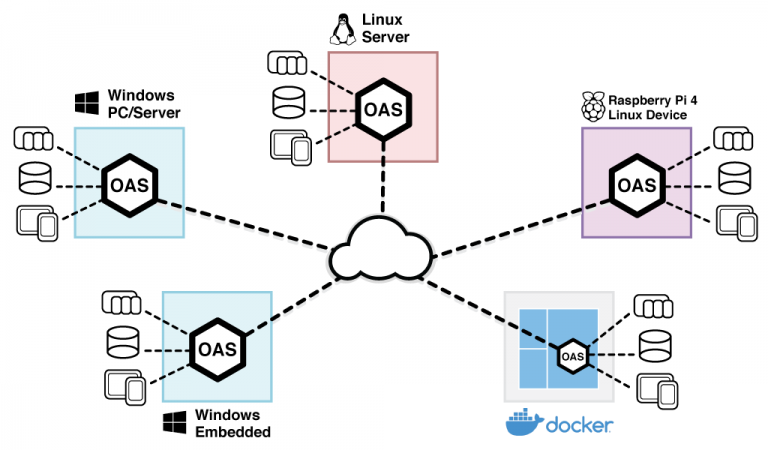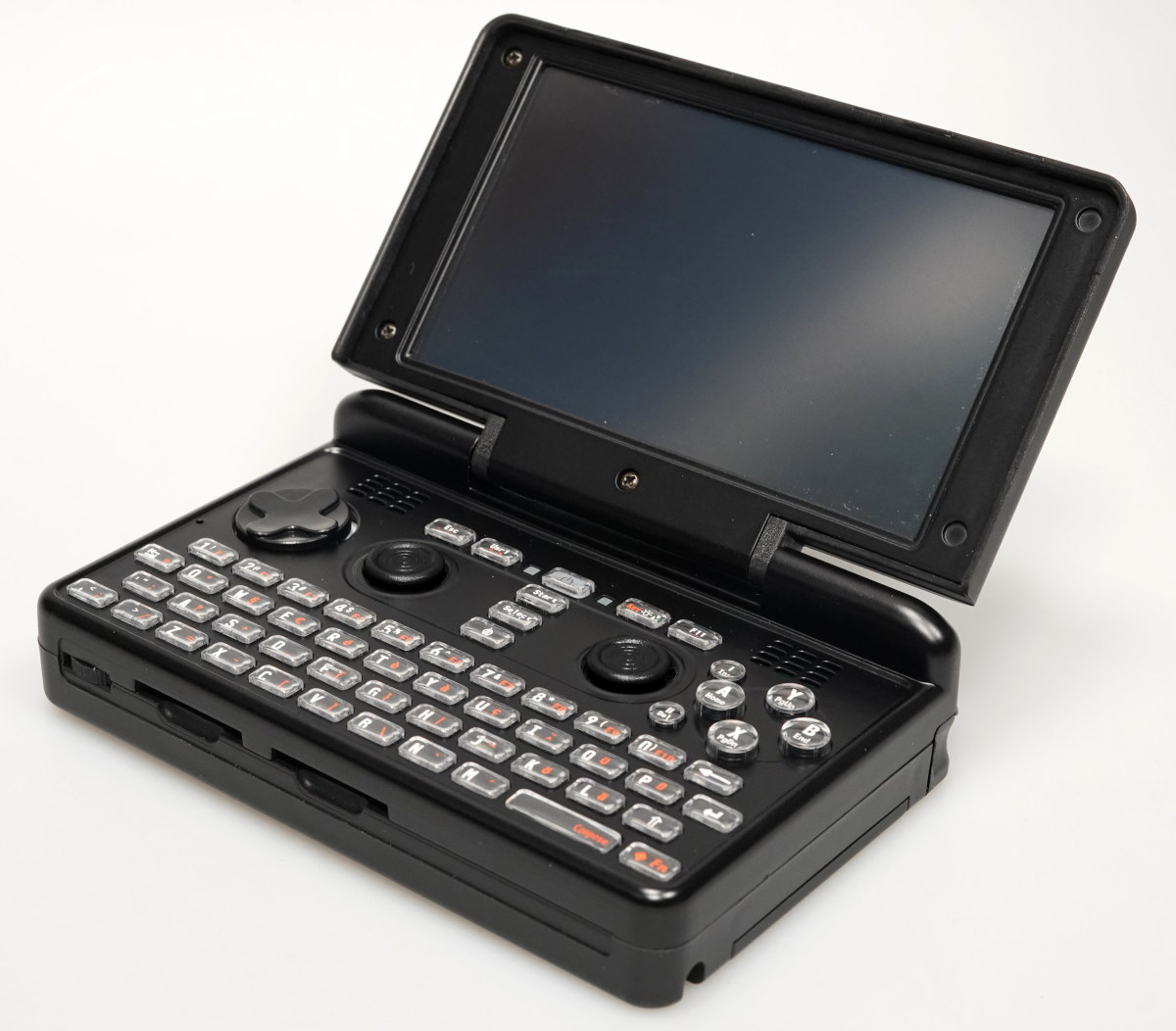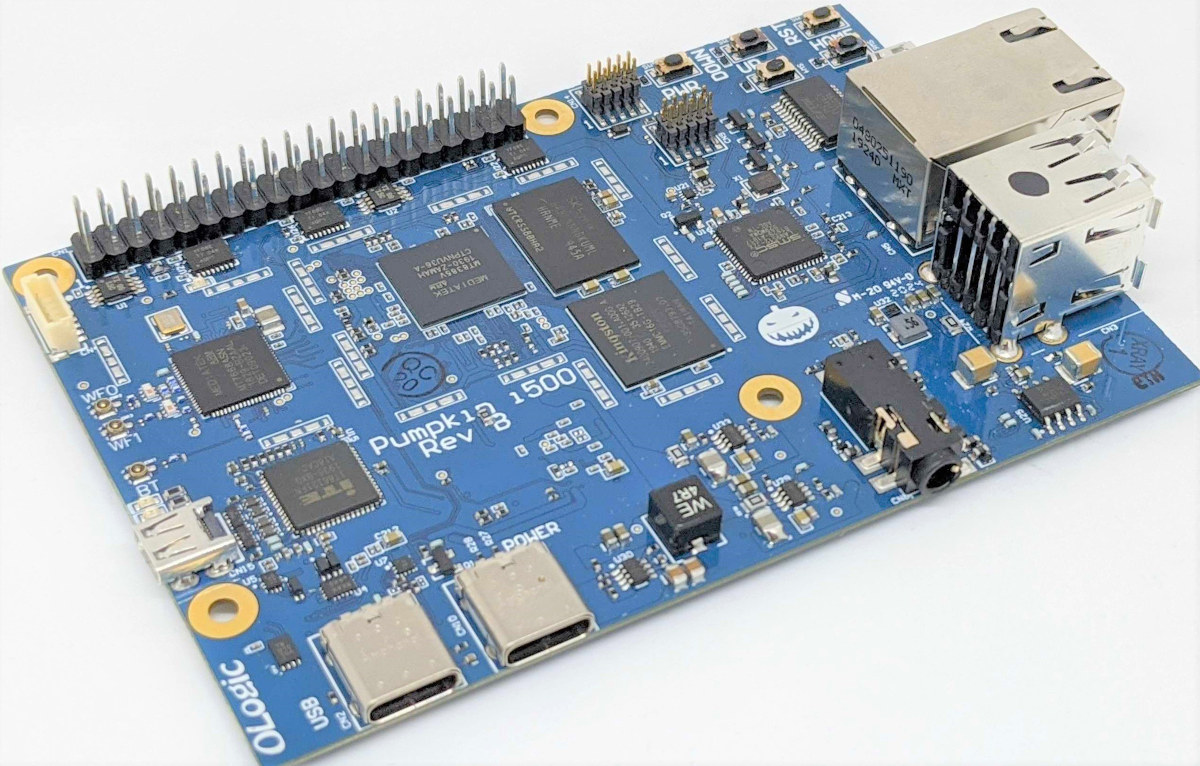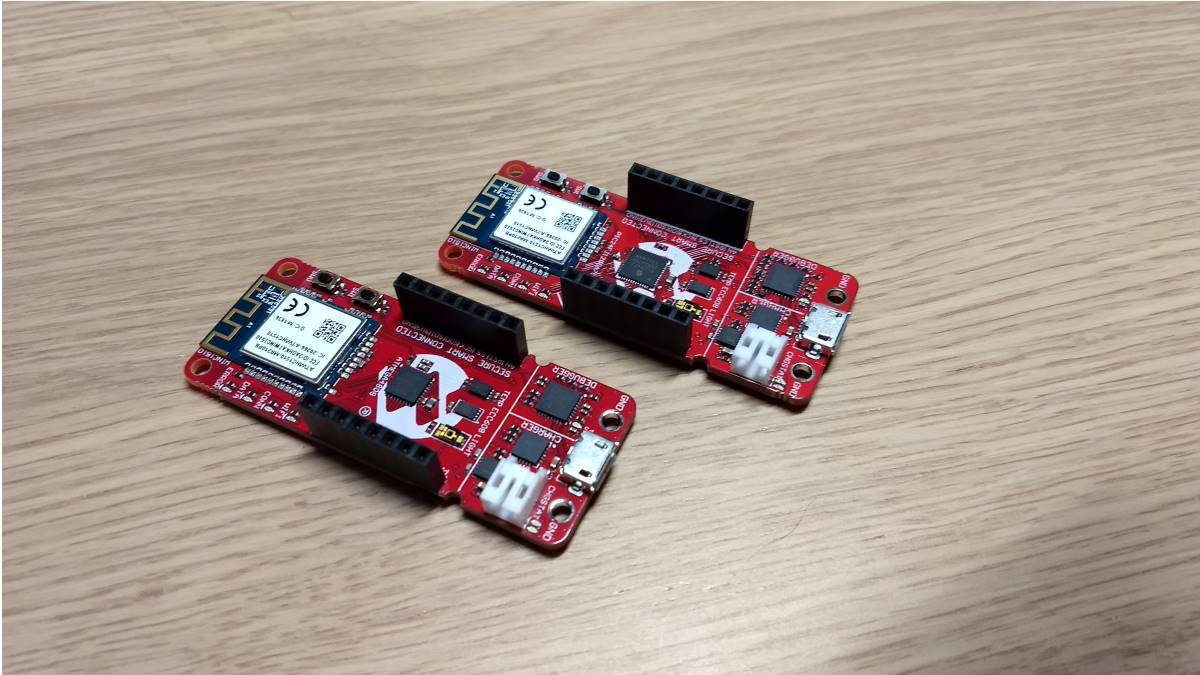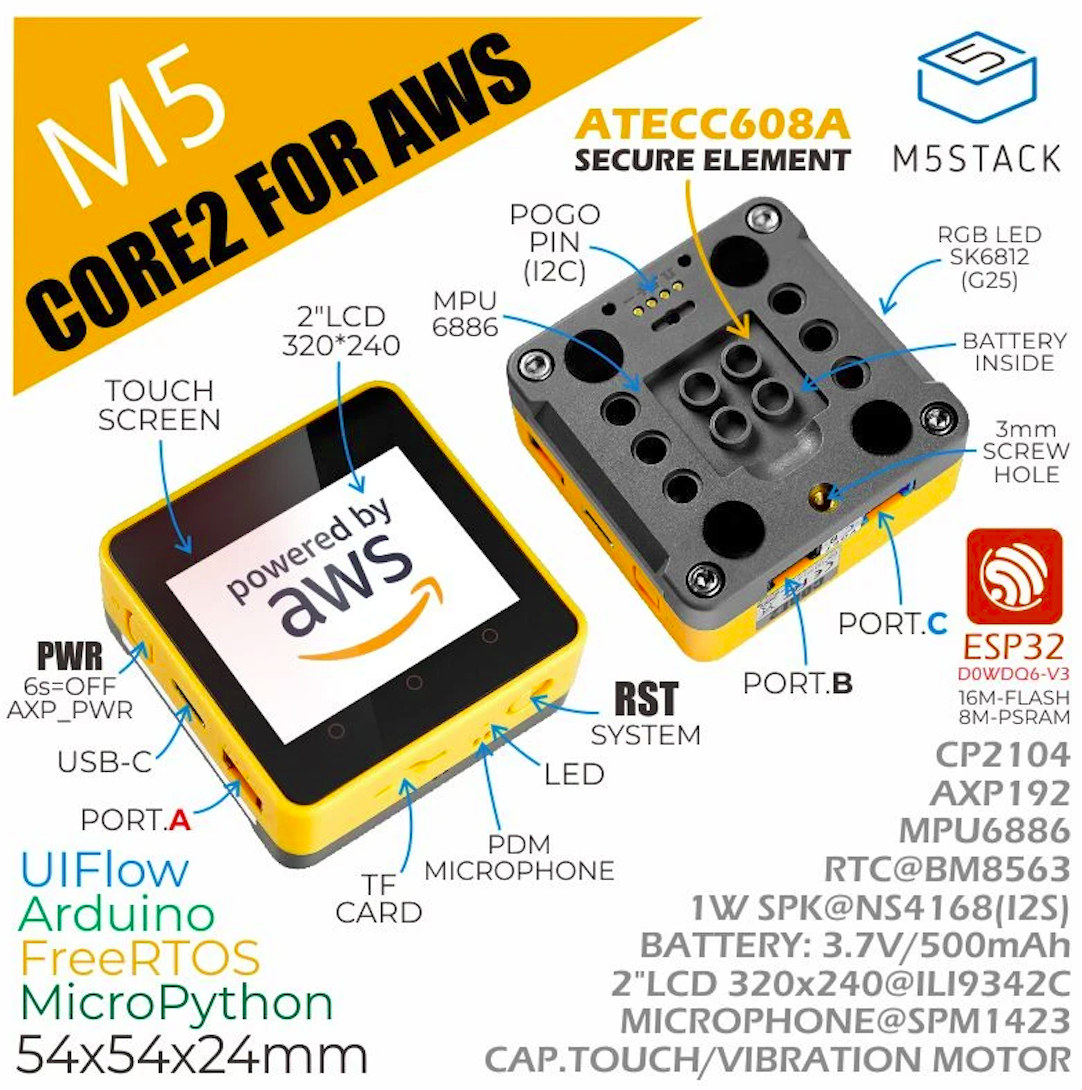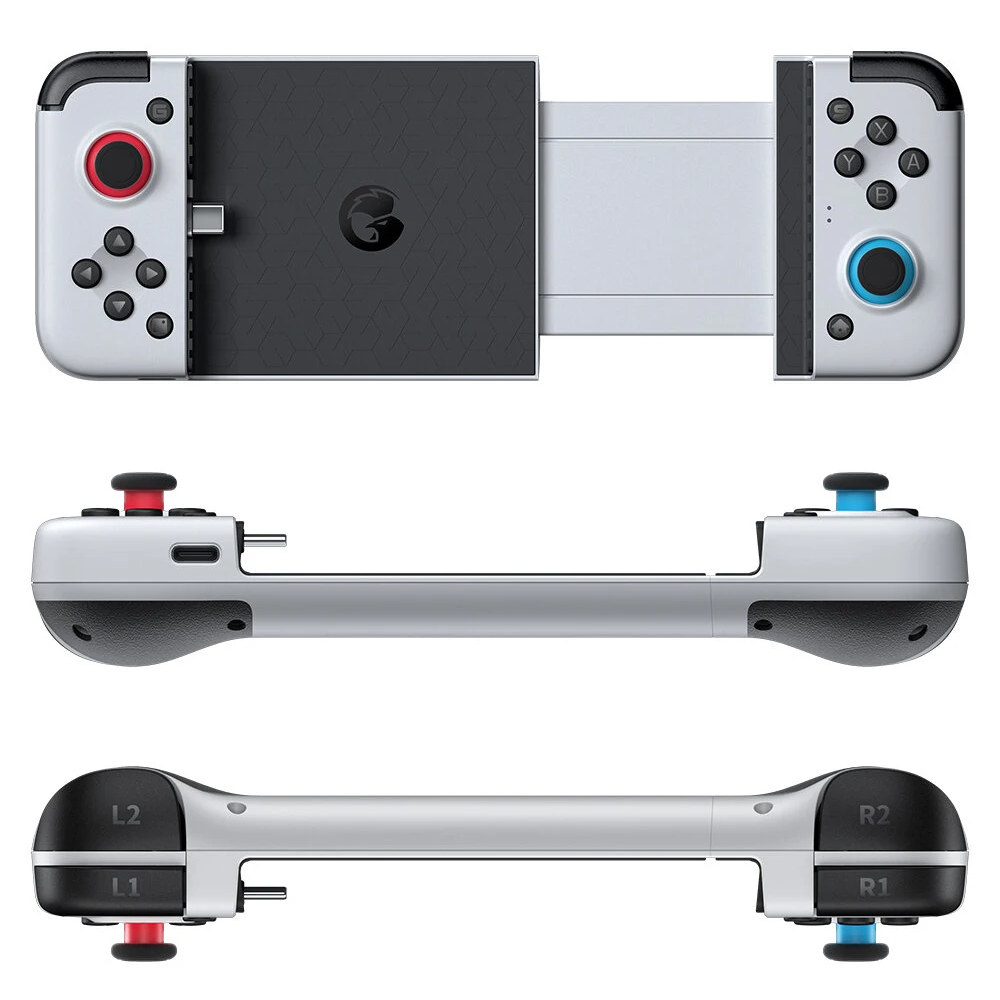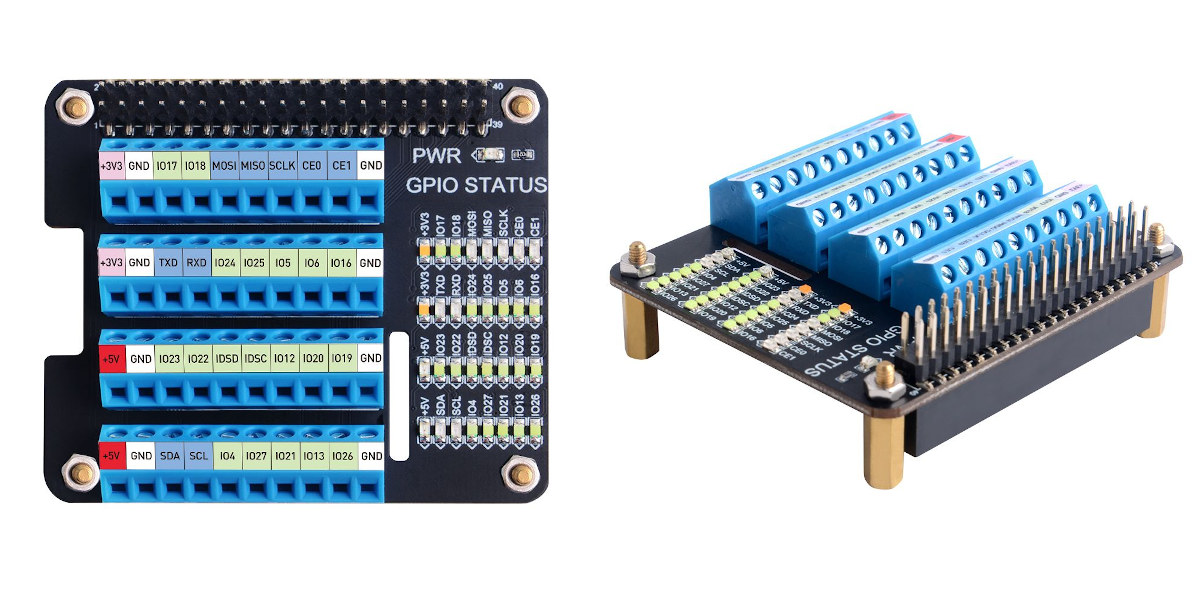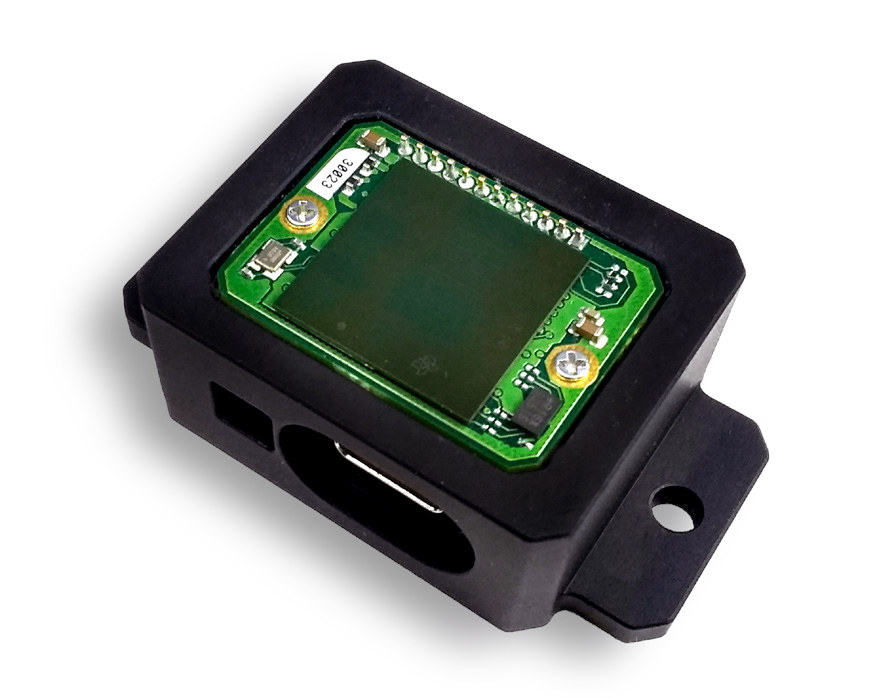A week before the announcement that Raspberry Pi supported industrial customers through several new services, including a dedicated website for the industry and the Raspberry Pi Approved Design Partners program, OAS announced support for deploying the Open Automation Software Platform on Raspberry Pi 4 with 4GB or 8GB of memory. The solution enables the low-cost scaling of operations and “reliable on-site data logging in remote locations with limited power and connectivity”. As you may know… or not, OAS has provided IIoT solutions for the last 20 years and is widely used since the company offers secure moving of data from one location to another. Network Configuration Possibilities The platform offers support for Windows PC/Server, Windows Embedded, Windows IoT, Linux Server, Virtual Machines (Win/Linux), Raspberry Pi 4, and Docker Containers (Win/Linux). “These systems can be networked together and share data creating endless network configuration possibilities”. The OAS platform running on the […]
Dragonbox Pyra open source hardware handheld Linux PC is finally shipping
We first covered the Dragonbox Pyra in 2014 when it was described as an open-source handheld game console powered by Texas Instruments OMAP5432 SoC, or maybe AllWinner A80, Intel Bay Trail, or Qualcomm Snapdragon processors since the exact specifications were still in the works for the Pandora successor. Michael Mrozek (EvilDragon) finally decided to keep going with the OMAP5 processor due to the good documentation and software support, and pre-orders started in 2016 with a 330 to 400 Euros downpayment and no clear timeline about shipping. It eventually took over four more years, but the Dragonbox Pyra is finally getting assembled and shipping to backers has started. Since so many years have passed, you’d be forgiven if you completely forgot or did not know at all about the specifications: SoC – Texas Instruments OMAP 5432 SoC with 2x Arm Cortex-A15 @ 1.5 GHz with NEON SIMD, 2x ARM Cortex-M4, Imagination […]
Pumpkin i500 SBC uses MediaTek i500 AIoT SoC for computer vision and AI Edge computing
MediaTek Rich IoT SDK v20.0 was released at the beginning of the year together with the announcement of Pumpkin i500 SBC with very few details except it would be powered by MediaTek i500 octa-core Cortex-A73/A55 processor and designed to support computer vision and AI Edge Computing. Pumpkin i500 hardware evaluation kit was initially scheduled to launch in February 2020, but it took much longer, and Seeed Studio has only just listed the board for $299.00. We also now know the full specifications for Pumpkin i500 SBC: SoC – MediaTek i500 octa-core processor with four Arm Cortex-A73 cores at up to 2.0 GHz and four Cortex-A53 cores, an Arm Mali-G72 MP3 GPU, and dual-core Tensilica Vision P6 DSP/AI accelerator @ 525 MHz System Memory – 2GB LPDDR4 Storage – 16GB eMMC flash Display – 4-lane MIPI DSI connector Camera – Up to 25MP via MIPI CSI connector Video Decoding – 1080p60 […]
IoT development board comes with AVR or PIC MCU, WiFi module
Microchip AVR-IoT and PIC-IoT development boards have AVR and PIC MCUs respectively, which enables a simple interface between embedded applications and the cloud. The IoT development boards can securely transfer data to Amazon Web Services (AWS) IoT platform with a WiFi connection. The IoT development boards also include an onboard debugger which can be used to program and debug the MCUs without any need for external hardware. The IoT development boards also have an integrated lithium battery charger, which makes it a rechargeable device and allows easier deployment for a “ready-to-go solution.” The AVR-IoT WA development board integrates the ATECC608A CryptoAuthentication chip for security protocols and the ATWINC1510 Wi-Fi network controller for connectivity. The development board combines the ATmega4808 MCU 8-bit AVR MCU running at up to 20 MHz and offers a wide range of flash sizes up to 48 KB. The unit uses a “flexible and low-power architecture, including […]
AWS IoT EduKit leverages M5Stack Core2 ESP32 hardware
M5Stack Core2 is a neatly packed ESP32 IoT development kit with a 2-inch touchscreen display, motion sensor, a microphone., and a built-in battery that was launched last September. The hardware has been selected by Amazon Web Services and gone through some small modifications including the addition of a secure element, and a yellow paint job giving birth the the “AWS IoT EduKit” hardware and software solution designed to “learn how to build IoT applications using AWS services through a prescriptive learning program”. M5Stack Core2 for AWS IoT EduKit specifications are pretty similar, but with a few tweaks here and there: SoC – Espressif ESP32-D0WDQ6-V3 dual-core Xtensa LX6 processor clocked at up to 240MHz with 520KB SRAM, Wi-Fi, and dual-mode Bluetooth connectivity External Memory – 8MB PSRAM Storage – 16MB flash storage, MicroSD card slot up to 16GB Display – 2-inch IPS LCD screen with 320×240 resolution (ILI9342C driver), and touchscreen […]
GameSir x2 Type-C game controller transforms your phone into a gaming console
In recent days, we’ve written about Arm-based portable retro-gaming consoles running Linux or Android with products such as ODROID-Go Super and KT R1. The former is affordable at $80, but people may complain about performance, while the latter is much more powerful, but is expected to cost around $200. If you’d like a rather powerful portable retro-gaming console, but don’t plan to spend more than the $80 asked for Odroid-Go Super, you could always connect your smartphone to GameSir x2 gamepad/game controller that brings most of the same buttons and joysticks through the USB-C port of your phone and sells on Banggood for $69.99 shipped. GameSir x2 key features and specifications: Host interface – USB-C port that can rotate by up to 51° during installation Max phone length – 167 mm User inputs – 2x analog joysticks, D-Pad, XYAB buttons, L1/2 and R2/3 buttons, home button Power Consumption – Around […]
GPIO screw terminal HAT for Raspberry Pi adds LEDs and GPIO markings
Screw terminals provide a more secure way of connecting wires to products that may be exposed to vibrations and shocks, and in the past, we’ve seen Pi-oT MKR module enclosure that routes Raspberry Pi GPIO’s to screw terminals, and also happens to include a breadboard area. 52Pi has come up with another product with screw terminals designed for Raspberry Pi boards, but more geared towards education as the company’s “GPIO screw terminal HAT for Raspberry Pi” exposes all I/Os from the 40-pin expansion headers and adds an LED to each pin. That means you don’t need to search for “Raspberry Pi pinout diagram” on the web or reach out for a printout each time you plan to wire your project as the main function of each pin is clearly marked on each screw terminal. It’s an easy way to teach about GPIO since the LED will be turned on and […]
Tiny mmWave radar sensor embeds Cortex-R4F core for object tracking, classification
The 1″ cube mmWave RS-6843AOPUA radar sensor, announced by D3 Engineering, is a miniature radar device that enables easy integration of radar algorithms for industrial applications. The RS-6843AOPUA radar sensor is an AECQ-100-qualified 60 GHz device that integrates a Texas Instruments C674x DSP for algorithms and an Arm Cortex-R4F microcontroller unit for decision-making and interfacing. It also has a radar accelerator and an “on-package antenna array.” The RS-6843AOPUA radar sensor features a 1-inch cube form factor, heat-spreading metal body, mounting tabs, and a USB-Serial interface. The USB-Serial interface could be used to test and evaluate the radar sensor. Functions and Applications of the Radar Sensor TI C674x DSP: FMCW (Frequency Modulated Continuous Wave) signal processing, Implementation of algorithms Radar Accelerator: Radar data processing Arm Cortex-R4F MCU: Object tracking, Classification, Communications “The RF front end integrates a PLL, three transmitters, four receivers, and baseband ADC, and allows the sensor to cover […]


